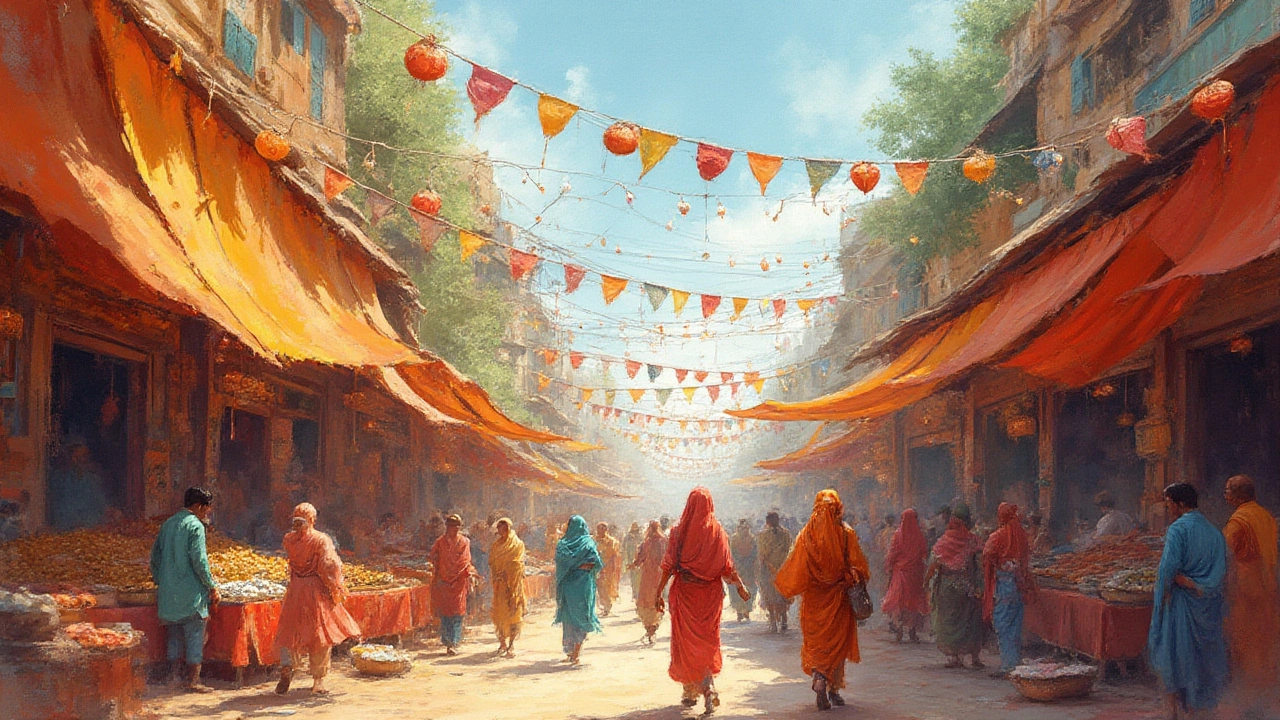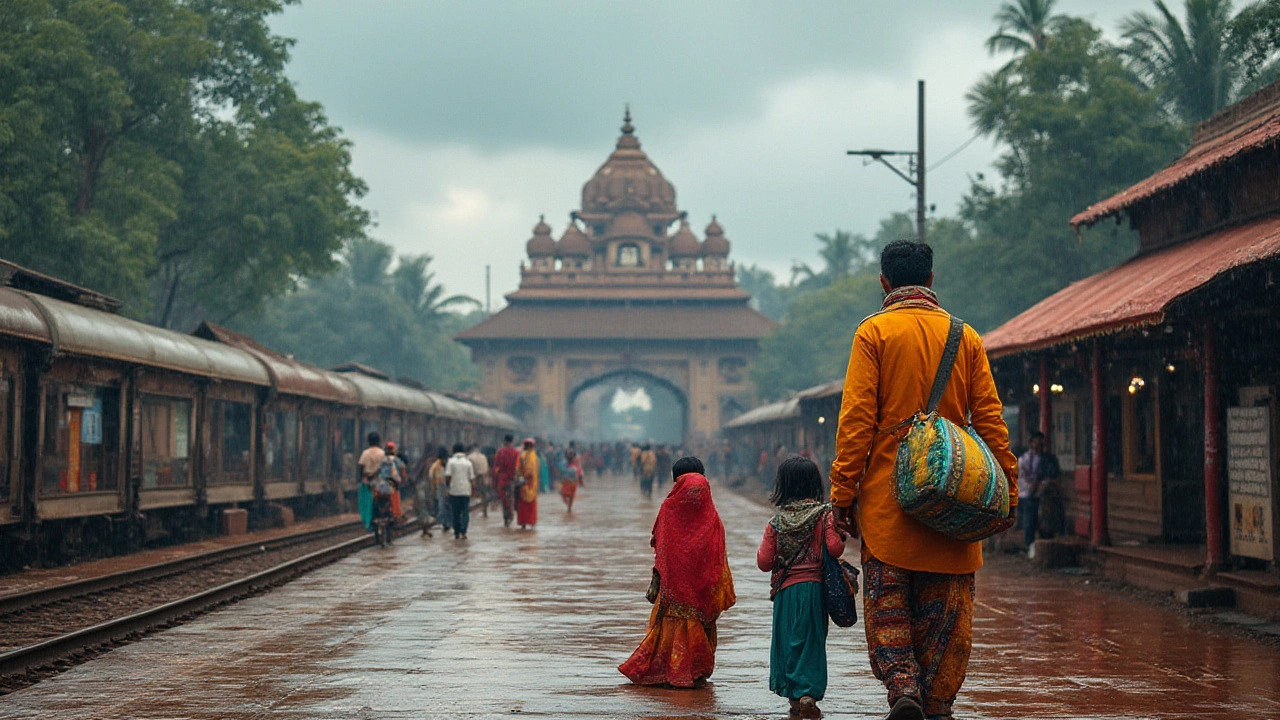If you ask ten friends when is the cheapest month to travel to India, you’ll probably get ten answers – and most of them will be guesses. So here’s something solid: India’s wild price swings don’t follow a single rule. The cheapest month isn’t about one magical date – it’s a mix of weather, school breaks, festival noise, and even cricket schedules. But you came here for a straight answer – so let’s break down the facts and get you set for the cheapest adventure possible without sacrificing the stuff that makes India legendary.
How India’s Seasons and Holidays Shape Airfare and Hotel Prices
India packs just about every climate you can imagine into one country. It’s got the snow-capped Himalayas, tropical southern beaches, desert in Rajasthan, monsoon-soaked cities, and blazing heat in the central plains. India’s tourist year splits three ways: peak (October to March), shoulder (April and September), and low season (May to August). Prices change a lot between these windows.
The cheapest month to travel to India almost always falls between May and September. That’s the time when the country is either baking hot, drenched by monsoon rain, or both. Domestic tourism drops, and international travelers stay away in droves. The result? Airlines slash fares, especially on less-popular routes. You’ll see discounts of 25% to 50% compared to peak season.
Hotels do the same. The five-star resorts, city hotels, and even homestays all run special offers, sometimes bundling in meals or free nights. In 2024, average hotel rates in Delhi for June dipped under ₹3,000 a night for mid-range options, compared to ₹6,000+ in December. Even in places like Goa, where prices can be nuts around Christmas, you’ll find beachfront deals during the rainy season.
Watch out for local holidays and festivals: Indian school summer holidays are usually May to mid-June. Popular sites get crowded, and domestic airlines see a small bump in prices. Also, be extra careful around Diwali, Holi, New Year, or any big cricket match – fares spike, and hotels get stuffed to the brim. If you want to steer clear of crowds and high fees, avoid the week before and after major holidays.
Here’s a quick stats table to bring this all together – these are median round-trip international fares (Wellington to Delhi) and average hotel rates, pulled from Skyscanner and Booking.com, for the 2024 travel year:
| Month | Avg Flight Cost (NZD) | Avg 3-Star Hotel (per night, ₹INR) |
|---|---|---|
| January | $2,250 | ₹5,500 |
| March | $2,050 | ₹4,800 |
| June | $1,580 | ₹2,900 |
| July | $1,490 | ₹2,700 |
| September | $1,620 | ₹3,200 |
| December | $2,500 | ₹6,400 |
You can see just how much things dip in June, July, and September. Airlines and hotels get desperate for your business.
Is It Worth Traveling During the Monsoon or Indian Summer?
So why aren’t people flocking to India for those crazy-cheap rates in June and July? There are two words: heat and monsoon. From late April to early June, much of North and Central India becomes a furnace. It’s not a cute 30°C day either. Heat waves hit 45°C and the air feels like it’s coming out of a hairdryer. In the South, it’s muggy, but bearable, thanks to ocean breezes.
By mid-June, it’s monsoon time. The rain hits the Kerala coast and moves north and east. Most days start dry and end with wild downpours. Streets in big cities like Mumbai flood, and rural areas sometimes get cut off. It’s dramatic, but not always a deal-breaker. Nature is at its greenest, and mountain towns like Munnar, Ooty, or even parts of the Western Ghats look straight out of a catalog. Kerala’s backwaters can be cozy with a cup of chai and a book while the rain slams the roof.
Here’s the trick: plan where you go. The far North (think Ladakh, Himachal, Kashmir) is mostly dry in June and July, with mountain weather and stunning clear skies. Beaches in Goa get pounded by rain but are blissfully empty – some cafes shut, but if you love quiet, it’s heaven. In Rajasthan, the heat starts to drop after July, and desert towns look incredible after a fresh rain.
It’s a photographer’s dream: misty tea hills, dramatic clouds, empty UNESCO sites like Hampi or Ajanta, and tigers more visible at national parks. Mosquitoes do love the wet, so be ready with repellent. Public transport sometimes runs slow, especially trains and budget airlines, but delays are part of the adventure.
If you only want city breaks (Delhi, Mumbai, Kolkata), you’ll have fewer tourists to elbow out of the way. Just dress light, bring waterproof everything, and keep an eye on weather alerts.

The Cheapest Month: Zoom In on July
Across most routes and hotels, July comes out as the king of cheap. Not only are flight tickets at their bottom, hotel deals pop up everywhere, and even organized tours slash prices. July sits deep in the monsoon. Your first thought might be, "But isn’t everything soaked and miserable?" Strangely, no. The early monsoon brings relief to a country boiling for months, so nature bounces back fast. Whole valleys go neon green, hills breathe mist, and outside festival weeks, restaurants and shops cut their rates to pull in anyone braving the rain.
Travel agencies often bundle monsoon packages that include local helpers, cooking classes, or yoga in the rain. Beaches may be off for swimming, but inland, things get beautiful and wild. Temples, ancient ruins, and wildlife parks – most stay open, though opening hours are sometimes shorter.
Here’s a list of ideas for July:
- Kerala’s houseboat stays crash in price (yep, it’s rainy, but that’s the charm).
- The Himalayan regions like Ladakh and Spiti are in their travel prime, snow is gone and roads open.
- Major heritage sites like Khajuraho, Hampi, or Jaipur see fewer crowds, making solo exploring magical.
- Yoga retreats and Ayurveda clinics often run “Green Season” specials.
- If you love food, this is mango season! Local restaurants overflow with varieties you’ll never try at home.
- Domestic Indian tourists skip the beaches, so even Goa’s best hotels drop below half-price.
Long-haul flight deals in July are a real game changer. Plenty of New Zealanders chase fares under $1,500 NZD round trip. Sometimes, side routes like Wellington-Singapore-Chennai, or even Kuala Lumpur into Trivandrum, skim hundreds off the standard price. Flexibility is your best friend. Set flight-search alerts and consider flying on less “desirable” days, like Monday or Tuesday.
The only real roadblock? Landslides in the hills after big storms. Always check for weather warnings, especially in Himachal Pradesh or the North East. Otherwise, July isn’t just cheap – it’s strangely magical if you lean into the adventure.
Extra Tips to Squeeze Every Dollar Out of Your Indian Trip
Flights and hotels are big, but the little things matter, too. If you play your cards right, you can cut costs by half again without living like a monk. Book your international flight three to four months ahead – last-minute deals happen, but for India, the sweet spot for savings is early. Use a VPN to check flights from different countries; sometimes fares change by weird amounts. Also, look at alternative airports. Instead of flying into Mumbai or Delhi, try Bangalore, Chennai, or Kochi.
Trains are the most scenic way to see India, but book as early as possible, especially for AC cars. Apps like IRCTC or even Cleartrip let foreigners buy tickets without hassle. Buses work too, and are even cheaper, though they trade comfort for price.
Eat local. Not only is it tastier, but it’s laughably affordable. A thali at a roadside dhaba costs less than a cup of coffee back home. Use prepaid taxi apps (like Ola or Uber) instead of haggling at airports. If you stick to the main monsoon months, hotels throw in free breakfast or airport rides as extras – just ask when booking.
Pack light, think flexible, and be ready for surprises. If a monsoon closes one beach, a mountain town is just a day away. Make a few local friends, and you’ll spot budget hacks nobody advertises online.
To sum it up the Kiwi way—if you want to save, July is your window. Flights hit their lowest numbers, hotels open doors at rock-bottom prices, and the character you’ll find in monsoon season makes for next-level travel stories. Bring a rain jacket, a bit of patience, and your sense of humor – you’ll end up spending less than you ever dreamed possible.
